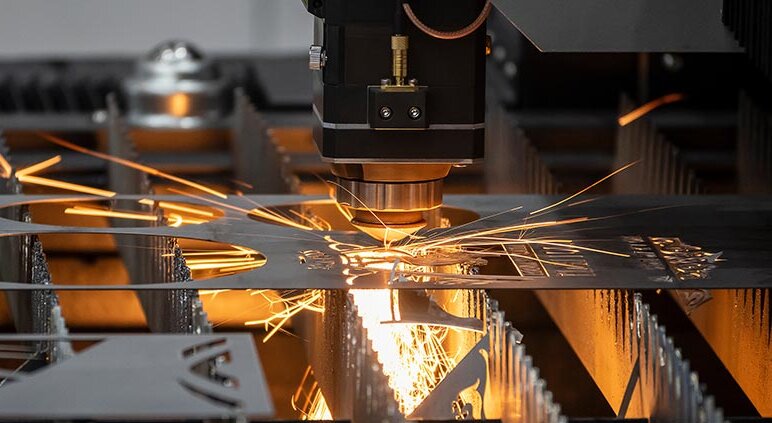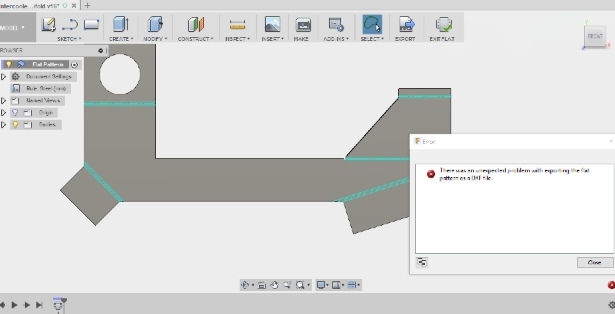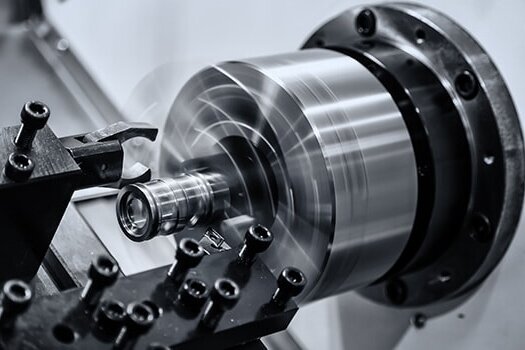Every great product begins with an idea. But turning that idea into something real takes precision, speed, and the right tools. In today’s fast-moving market, designers and engineers face constant pressure to create smarter, lighter, and more efficient products—faster than ever before.
Il taglio laser è diventato una parte fondamentale di questo processo. La sua precisione e flessibilità aiutano a trasformare i concetti creativi in parti reali e funzionali con sicurezza. Dai piccoli prototipi ai complessi assemblaggi finiti, il taglio laser colma il divario tra immaginazione e produzione.
This article explores how laser cutting is driving the next generation of product design—making it possible to move from concept to production faster, cleaner, and smarter.
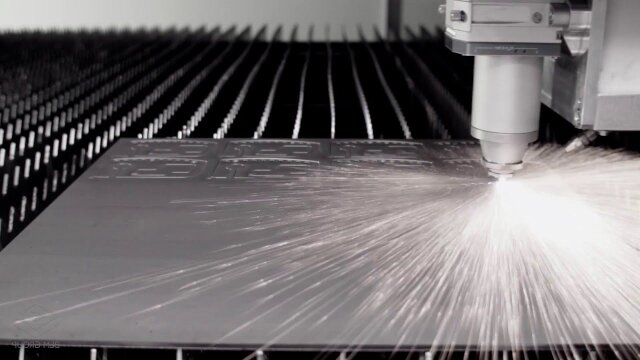
Precision and Flexibility in Laser Cutting Design
Laser cutting gives designers the power to turn detailed ideas into real parts with high accuracy. Its precision and fast operation make it possible to explore new shapes, fine details, and efficient material use.
Complex Geometries Made Simple
Taglio laser makes it easier to produce complex shapes such as curves, slots, holes, and lattice patterns. These designs are often too costly or difficult to make using traditional tools. The process offers micron-level precision, which is ideal for items like ventilation grids, thin brackets, and decorative parts that need clean and smooth edges.
Since there is no tool wear or vibration, every cut stays consistent even after producing thousands of pieces. For example, stainless steel ventilation panels used in medical or electronic devices can be laser cut in just minutes and assembled right away without extra finishing work.
Reduced Prototyping Time
Speed is one of laser cutting’s biggest strengths. Engineers can go from a CAD design to a real sample in only a few hours, instead of waiting several days. This helps design teams test, adjust, and complete their projects faster while cutting costs by as much as 40%.
For startups and R&D teams, this flexibility saves time for improving performance rather than waiting for tooling. It also lowers design risk because errors are found early—before spending money on molds or mass production.
Automotive and Aerospace Innovations
Both the automotive and aerospace industries depend on lightweight, high-strength materials and tight tolerances. Laser cutting provides the precision and repeatability needed to improve safety, performance, and production efficiency.
Lightweight Components
Weight plays a key role in fuel economy and overall performance. Laser cutting allows manufacturers to create thinner yet stronger components. For example, parts like battery trays, heat shields, and interior reinforcements in electric vehicles are now laser cut. This helps save material and improves assembly accuracy.
In aerospace, laser cutting is used to produce titanium brackets, turbine shrouds, and cabin frames. These parts must remain reliable under high temperatures and constant vibration. Laser precision makes this possible.
Improved Safety and Performance
Laser cutting ensures each component meets strict performance standards. It produces smooth, burr-free edges that prevent fatigue and cracking over time. As a result, aircraft and automotive parts made with this process last longer and need less maintenance.
With automated machines and robotic systems, laser cutting supports continuous 24-hour production. Accuracy stays consistent from the first cut to the last. This balance of precision and speed helps manufacturers lower production costs and increase product reliability.
Elettronica e prodotti di consumo
Modern devices require compact, precise, and customizable parts. Laser cutting meets these needs with clean edges, fine details, and the flexibility to handle both prototypes and mass production.
Fine Detailing for Small Parts
Laser beams can cut or engrave features smaller than 0.1 mm. This allows perfect alignment for micro holes, vents, and mounting slots. For example, laser-cut heat sinks and circuit enclosures ensure tight fits and reliable cooling performance.
Because the process is contact-free, it prevents material stress and keeps sharp detail even after hundreds of production runs. Compared with stamping, laser cutting can lower defect rates by up to 40%. It also provides smoother, cleaner edges.
Customization in Consumer Goods
Today’s consumers want products that feel personal. Laser cutting makes this possible without increasing lead time. It can engrave names, patterns, or logos directly onto metal, acrylic, or leather surfaces.
Brands use this flexibility to create limited editions and small-batch runs efficiently. Each item looks unique while keeping the same high precision. This makes laser cutting a key technology in premium electronics and lifestyle products.
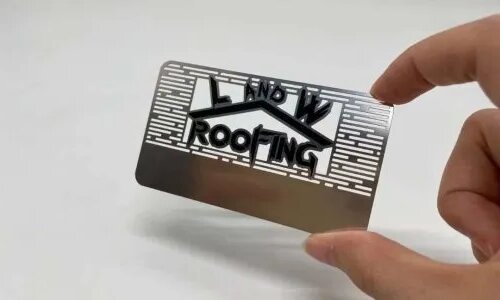
Architecture and Interior Design
Laser cutting allows creativity and engineering to work together. It combines structural strength with artistic expression in architectural facades, furniture, and modern interior designs.
Decorative Metal Panels
Laser-cut panels have changed the look of modern architecture. They are used on facades, ceilings, and partitions to manage airflow, light, and decoration all at once. With precise nesting, large metal sheets can be cut into complex geometric or floral patterns that repeat perfectly.
Materials such as stainless steel, aluminum, and corten steel keep clean edges and a uniform appearance. This makes them ideal for commercial buildings, hotels, and museums. These panels can also improve energy efficiency by controlling sunlight and ventilation through well-planned perforations.
Custom Fixtures and Furniture
In interior design, laser cutting helps create lighting fixtures, wall art, and modular furniture. Designers can cut wood, metal, or acrylic parts that fit together precisely. This ensures tight joints and clean aesthetics.
For instance, laser-cut lamp shades can project artistic shadow patterns. Flat-packed furniture also benefits from precision joints that make assembly simple and fast.
Dispositivi e apparecchiature mediche
In healthcare, precision can save lives. Laser cutting provides the reliability, cleanliness, and accuracy required for surgical instruments and advanced medical equipment.
Precision Surgical Tools
Surgical tools demand exceptional accuracy. Laser cutting produces smooth, burr-free edges with feature sizes as small as 50 microns. This level of detail ensures sharpness, easy sterilization, and lasting performance.
The process is ideal for scalpels, clamps, and minimally invasive instruments. Even a small imperfection can affect how these tools work. Because laser cutting is non-contact, it avoids contamination and ensures each tool meets strict medical safety standards.
Medical Enclosures and Frames
Medical housings, supports, and diagnostic frames need tight fits and clean finishes. Laser cutting keeps every hole, slot, and bracket dimensionally consistent. This consistency is critical for reliability and hygiene in medical settings.
For example, custodie in acciaio inox for X-ray machines or lab analyzers are laser cut with zero burrs. This reduces the risk of contamination and makes cleaning easier. The process also allows for quick prototyping, enabling engineers to test and improve new designs in days rather than weeks.
Sustainable and Efficient Manufacturing
Laser cutting combines advanced technology with sustainability. It helps reduce material waste, lower energy use, and support eco-friendly production—all without sacrificing speed or quality.
Efficienza dei materiali
With advanced nesting software, laser cutting can achieve over 90% sheet utilization. This means far less scrap compared to traditional machining. The narrow laser beam and optimized cutting path ensure that every millimeter of material is used effectively.
For expensive materials like titanium or brass, this efficiency brings direct cost savings and a smaller environmental footprint. Less waste also reduces transport and recycling costs later in the process.
Lower Energy Use
Modern fiber lasers use up to 50% less energy than older CO₂ systems. They also cut faster and produce cleaner edges. Because they need little cooling and create less heat, operating costs and emissions stay low.
Many manufacturers now pair their laser systems with renewable energy sources. This shift supports smart, low-emission production lines that meet environmental goals and comply with ISO 14001 standards.
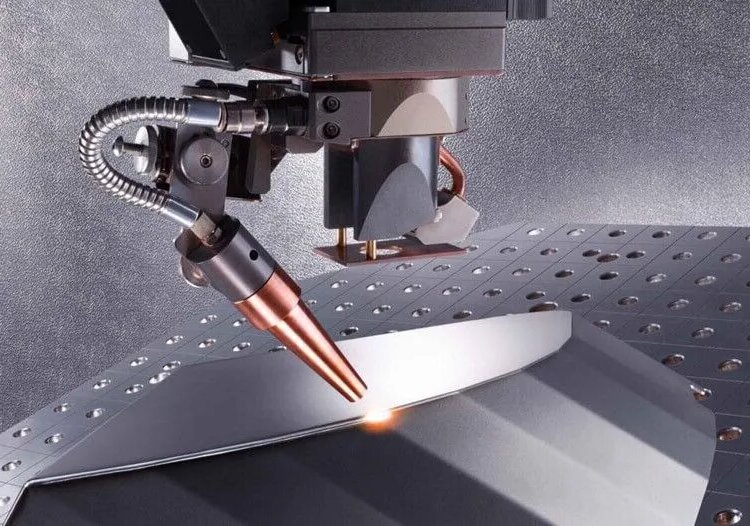
Art, Fashion, and Jewelry
Designers and artists are reshaping creativity through laser precision. This technology turns imagination into real forms with clean lines, repeatable patterns, and sustainable production.
Artistic Precision
Laser cutting gives artists full control over detail and texture. It produces smooth edges and complex shapes in materials such as metal, acrylic, and wood—without any manual finishing. Sculptors use it to build interlocking metal forms. Designers apply it to create detailed wall art and lighting pieces.
By combining cutting and engraving, artists can add texture and depth directly onto their work. The result is clean, repeatable, and sustainable artistry. There is no wasted material and no need for rework.
Wearable Designs
In fashion and jewelry, precision defines beauty and quality. Laser cutting allows designers to craft intricate lattices, delicate patterns, and bold custom shapes in gold, steel, or acrylic. It is often used for custom watches, earrings, and engraved fashion accessories.
This process also makes production more sustainable. It reduces material waste and supports on-demand manufacturing. Designers can deliver personalized, high-quality products faster while minimizing environmental impact.
Rapid Prototyping and Short-Run Production
Speed and flexibility are key in modern product development. Laser cutting shortens lead times, lowers setup costs, and enables faster testing from concept to finished part.
Fast Iterations
Design changes can be made instantly. Once a CAD file is updated, a new prototype can be produced within the same day. This reduces the iteration cycle by up to 80% compared with traditional machining.
Such flexibility allows quick design validation and functional testing. For instance, an electronics designer can create several enclosure versions in one day, check fit and cooling performance, and finalize production geometry right away.
Cost Control
Because no molds or dies are required, short-run production stays affordable. Startups and small manufacturers can make low-volume batches to test the market before scaling up. Consistent accuracy minimizes scrap, while optimized nesting ensures better material usage.
Laser cutting delivers a strong balance of speed, cost efficiency, and repeatability. It fits perfectly in agile manufacturing setups and just-in-time production systems.
Integration with Digital Design Tools
Laser cutting fits smoothly into modern digital workflows. It turns CAD data into finished components, making collaboration easier and improving design-to-production efficiency.
From Digital File to Finished Part
Designers can move directly from digital files to real parts. There are no molds or setups needed—just upload the file and start cutting. This “design-to-part” process reduces setup time by about 60% and ensures consistent results.
For example, sheet metal enclosures designed in SolidWorks can be exported as DXF files and laser cut on the same day. This keeps design accuracy high and shortens delivery time.
Collaboration Between Teams
Digital integration allows real-time teamwork between engineers, designers, and fabricators. Teams can share updates instantly, track design changes, and maintain version consistency.
With cloud-based platforms and ERP connections, production data links directly to scheduling, quality control, and inventory systems. This helps reduce downtime and ensures everyone works from the same verified design file.
Ready to Bring Your Design to Life?
Upload your CAD file or drawing today, and our engineering team will review it within 24 hours. You’ll receive a free DFM analysis, material recommendations, and a clear quotation—no hidden costs and no delays.
Domande frequenti
Quali materiali possono essere tagliati al laser?
Laser cutting works with stainless steel, aluminum, brass, copper, titanium, acrylic, and wood. Each material offers unique benefits—metals provide strength, acrylic offers clarity, and composites reduce weight.
How accurate is laser cutting?
Industrial machines typically reach a tolerance of ±0.1 mm, while premium models can achieve ±0.05 mm. This precision reduces rework, improves assembly fit, and ensures consistent quality across large production runs.
Is laser cutting suitable for mass production?
Yes. With automation, multi-head systems, and optimized nesting, laser cutting supports high-volume production. It cuts setup time and overall cost by up to 30%, making it effective for both prototypes and large-scale manufacturing.
Does laser cutting affect material strength?
When properly calibrated, the heat-affected zone (HAZ) stays under 0.1 mm. This protects the base material’s properties. Parts maintain their tensile strength and dimensional accuracy, even under heavy use.
Can laser cutting be used for custom designs?
Absolutely. It’s ideal for personalized panels, logos, textures, or engraved patterns. Designers can update digital files instantly, allowing on-demand customization without extra tooling costs.
How thick can a laser cut?
Depending on the laser’s power, fiber systems can cut up to 25 mm (1 in) mild steel, 15 mm stainless steel, and 10 mm aluminum while maintaining clean edges.
Ciao, sono Kevin Lee

Negli ultimi 10 anni mi sono immerso in varie forme di lavorazione della lamiera, condividendo qui le mie esperienze in diverse officine.
Contattate

Kevin Lee
Ho oltre dieci anni di esperienza professionale nella fabbricazione di lamiere, con specializzazione nel taglio laser, nella piegatura, nella saldatura e nelle tecniche di trattamento delle superfici. In qualità di direttore tecnico di Shengen, mi impegno a risolvere sfide produttive complesse e a promuovere innovazione e qualità in ogni progetto.

